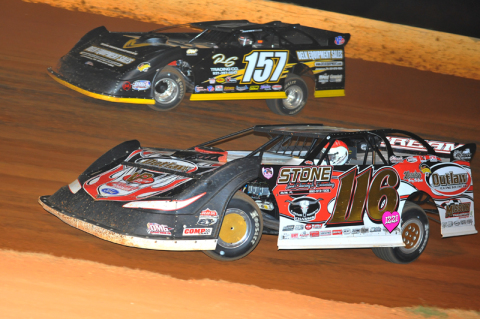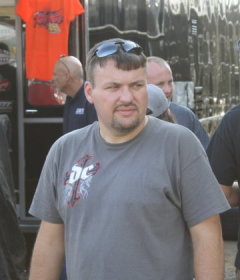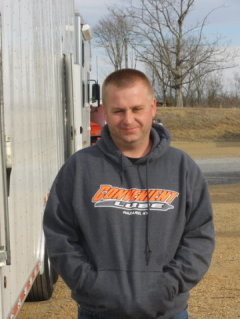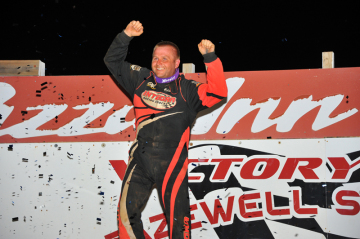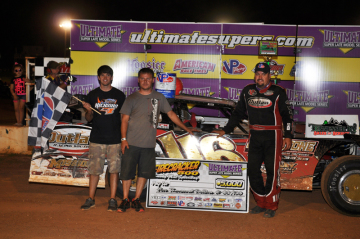Randy Weaver and Mike Marlar are two of the most accomplished Dirt Late Model drivers the east Tennessee region has ever produced. And both are coming off successful seasons that saw each of them win big races and make national headlines.
In two separate interviews conducted during the midst of those eventful campaigns, both Weaver and Marlar shared their views on the current state of their sport and their feelings on the direction it is headed toward. Particularly, both veteran drivers share the belief that the dirt racing has, for better or worse, evolved into more of an engineering based sport.
Weaver had one of his best seasons in 2014 after making a chassis change in the middle of the year. The longtime GRT loyalist made the move to Longhorn Chassis after considering the availability of engineering help that would come from an organization owned by former NASCAR racers Bobby and Terry Labonte and led by veteran car builder Kevin Rumley.
That move resulted in 11 total wins for Weaver in 2014, including a streak of six consecutive victories in July and the most lucrative win of his career when he collected $15,000 at Whynot(MS) Motorsports Park in October.
“This racing changes so quickly,” Weaver pointed out. “It used to be that you could have a good thing and ride it for a couple of years. But now, if you get two months out of it, it’s really big. It just progresses so much quicker. With the engineers, and that’s probably where our sport is headed and that’s probably not good, you’re going to either have an engineer on your team or somehow be involved with one to be successful.
“That’s the reason we picked Longhorn,” the Crossville, Tenn. native added. “You get lulled into doing the same thing for so long, but then when you get somebody with fresh ideas and they know what they’re talking about, it just seems to make for instant success.”
Marlar, who counted $10,000 wins in the World of Outlaws Late Models race at Tazewell Speedway and an Ultimate Super Late Models Series event at Ponderosa Speedway among his 2014 victories, agrees that engineering is changing Dirt Late Model racing.
“Ultimately all the engineering is forcing people out,” Marlar declared. “You can blame it on the economy, but it’s really the technology that’s causing so many people to leave the sport.”
But the Winfield, Tenn. driver still believes in the self-made racer. “The sport is more technical than it’s ever been,” he continued. “But I still believe a smart guy in his garage or in the driver’s seat can overcome that. The connections to NASCAR and the data acquisition they use allows us to know more about the cars, but it’s not the end of the world in terms of setting these things up.”
Weaver shares Marlar’s belief that the economy alone is not to blame for the decline in the number of top drivers and teams from the sport. High profile operations such as those of nationally known drivers Brian Birkhofer, Clint Smith, Eric Jacobsen, Brady Smith and Tim Fuller announced their intentions to either drop out of racing or significantly change their statuses for a variety of reasons near the end of the 2014 season. Among those reasons for some was the high cost of competing at the top levels of the sport.
According to Weaver, there are some who have the resources to drive those costs higher, and in turn, drive others out of the sport.
“There is something new coming along so often and everybody wants that magical thing that’s going to put us from running 5th or 8th to running 1st or 2nd,” the driver known as ‘The Dream Weaver’ explained. “And anymore, there’s a lot of teams that can buy whatever they want. Believe it or not, even with our economy like it is, there’s a certain amount of people who are going to spend money regardless. But now, I think they’re learning that this sport will eat that money by the truck load so you have to surround yourself with really good people and build relationships with some people who understand how things work.”
Marlar believes there is a solution to the ever increasing cost of racing. “I haven’t seen anything in the engineering world that trumps a good driver,” the 37-year-old racer said. “I think the biggest thing that hurts the racing nowadays is the air. We need to get back to smaller panels and back to more of an 80’s or early 90’s look on the these cars. It would cost less money and then more people could play. The cars need to have shorter door panels and the spoilers and noses need to be cut back. Also, the tires need to stick out of the sides of the bodies so that they’re exposed to the air.”
Marlar traces the rise of engineering in the sport to the loss of one particular individual. He believes that Bob Memmer, the founder of the UMP sanctioning body, kept a tight rein on technical advances within the sport. However, the founder of the Summer Nationals died in 2004.
“When we lost him, we lost control of the aero on the cars,” Marlar insisted. “I used to think he used too much of an iron hand when he would inspect cars, but now I look back and really appreciate that guy and how he handled things.”
Weaver admits that the modern day engineer can help racers eliminate a great deal of the trial and error that used to be necessary before advances could be made.
“The thing I’ve found out is that as an old school racer, we can build anything and put it on my car and I can tell you whether it’s better or worse, but I can’t really tell you why,” Weaver said. “I try to study and stay up on it as much as I can, but I’m no engineer. The engineer, when you tell him a problem, can create something to fix that problem and then implement it to your racecar and that’s the big difference.
“Like I said, I’m not sure it’s good for our sport because it’s way out of hand anyway, but that’s where it’s going,” the 45-year-old went on. “I’m telling you, it makes a difference when a guy tells you that this is what’s going to fix your problem and all you have to do is drive your race car without having to worry about all the whys and why nots. You just go out and steer the car. I’ve been really surprised and it kind of woke me up to realize how far behind I was with our personal team.”
Both men made it clear during these separate interviews that their comments were not meant to hurt modern day Dirt Late Model racing. Rather, they each hope the sport that has been good to them will grow and prosper so that they can remain a part of it.
“I can’t drive these things forever and one of these days I’m going to pick somebody to put in my stuff,” Weaver said. “I’ll still have a race team, but we’re going to go about it a different way so anything I can learn or a relationship I can build now will be very important in the future.”
“I do want to be clear about one thing,” Marlar pointed out. “I’m not taking away from racing. It’s bigger and better than it’s ever been, but I don’t want to see it become a rich man’s sport. I just want it to stay true to its heritage.”




